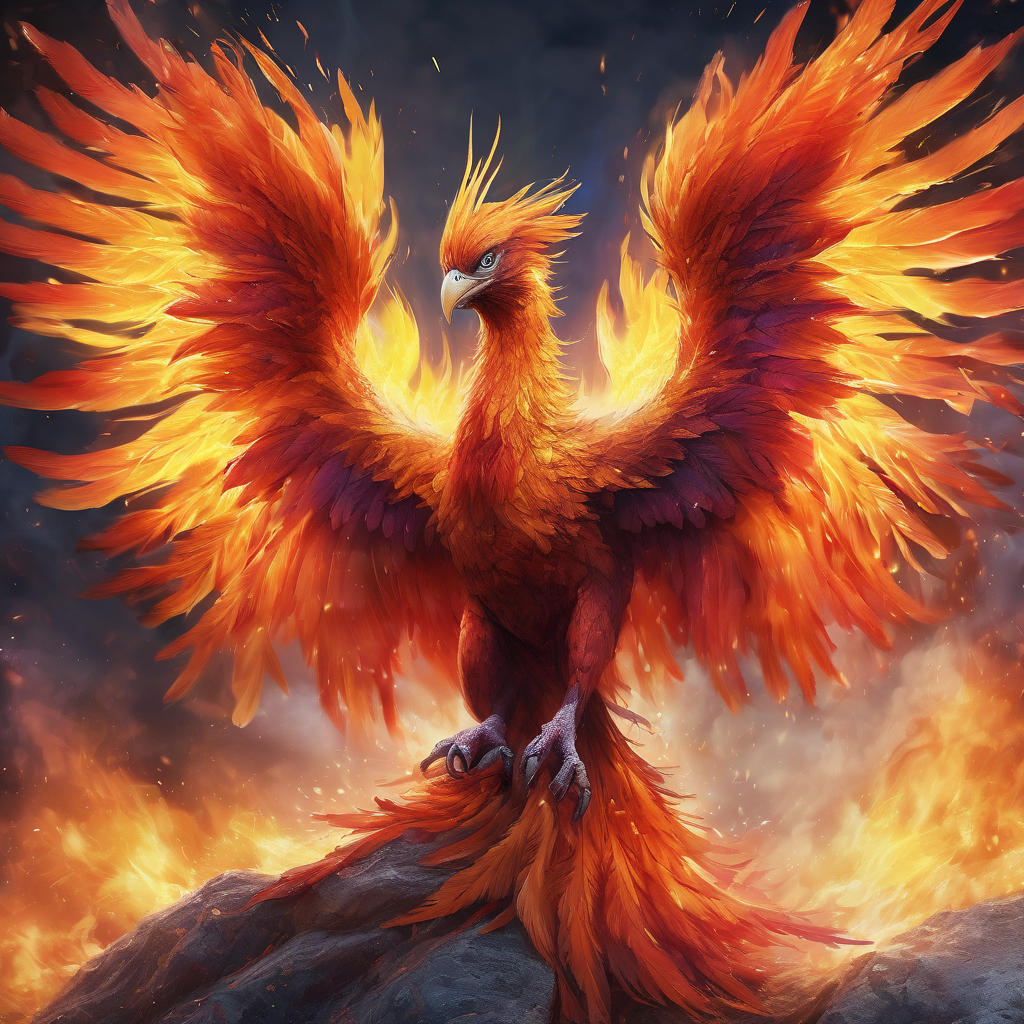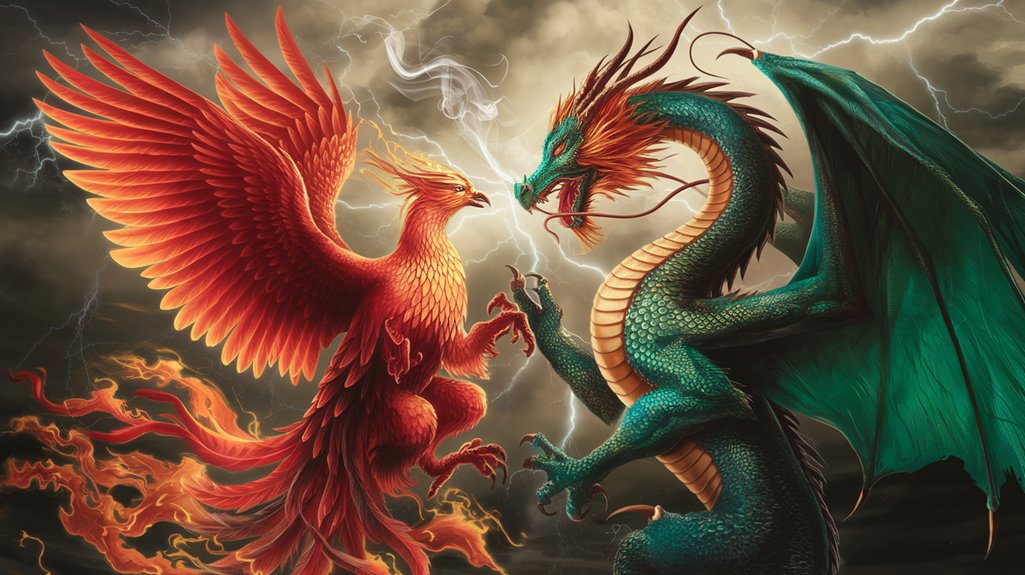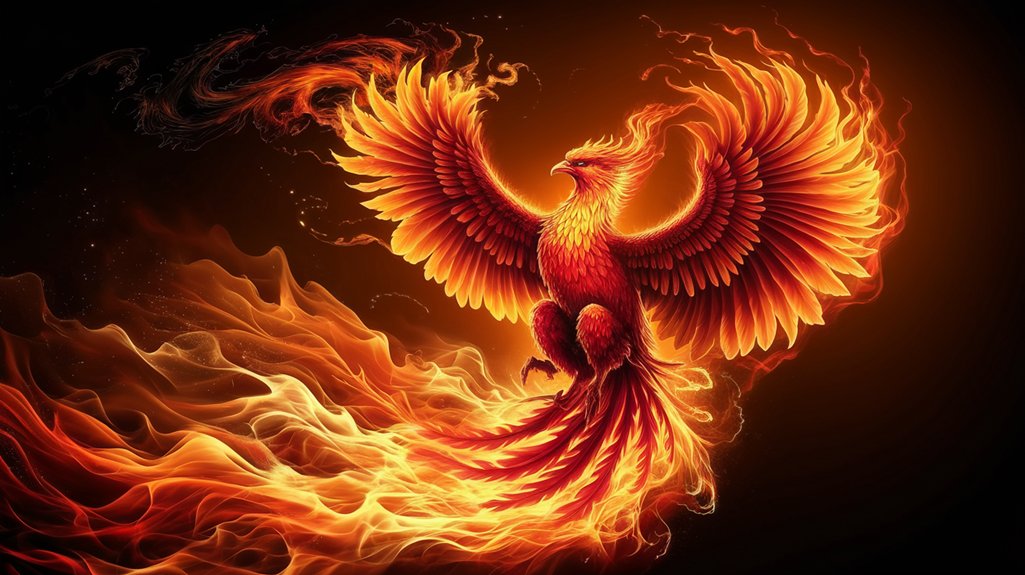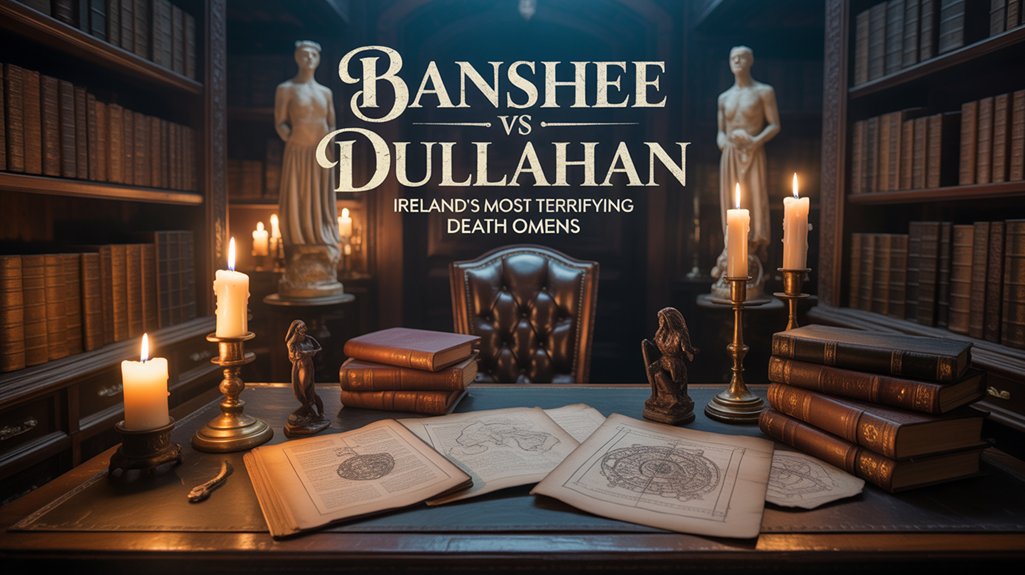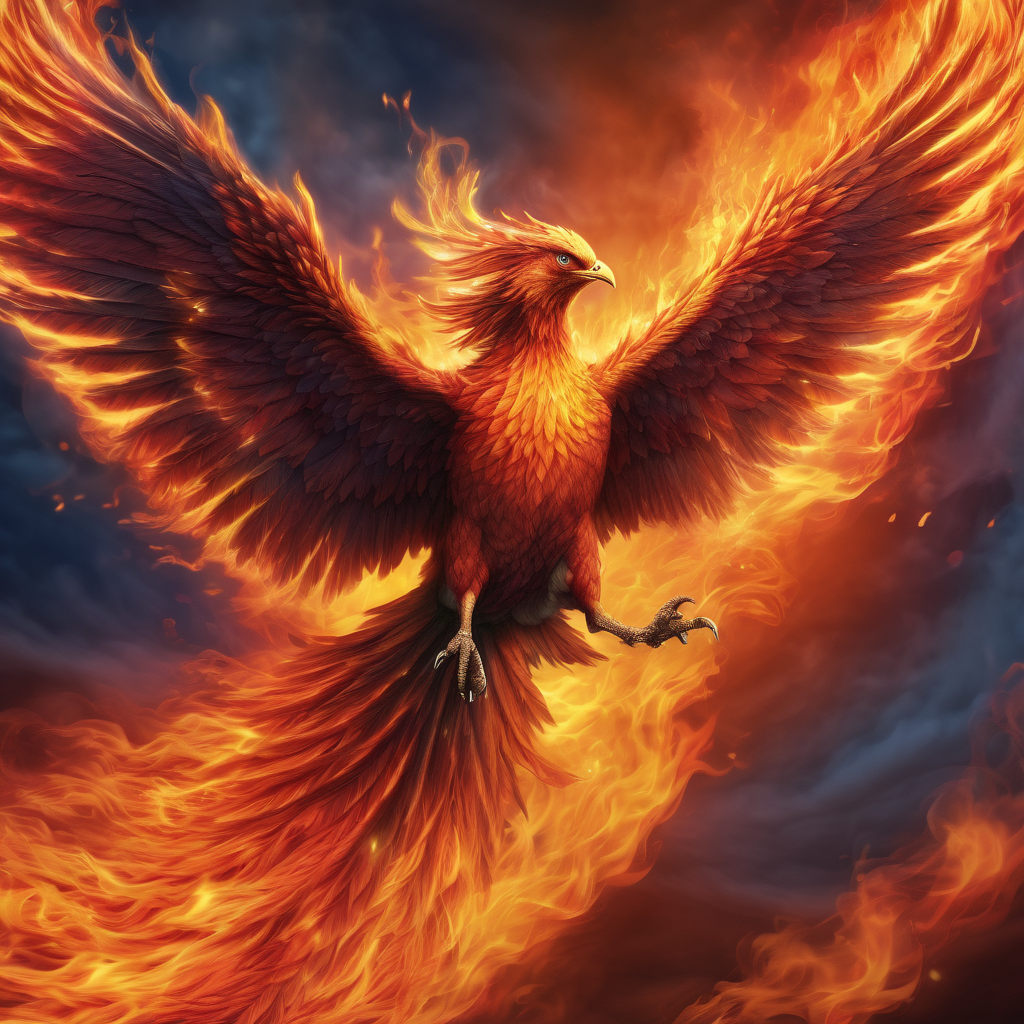
The phoenix stands as one of the most captivating mythical creatures in world folklore, representing rebirth, renewal, and eternal life. This magnificent fire bird has captured human imagination for millennia, appearing in cultures spanning from ancient Egypt to modern popular culture.
Table of Contents
ToggleWhat is a Phoenix?
A phoenix is a legendary bird that cyclically burns itself to death and rises from its own ashes. This mythical creature typically lives for 500 to 1,000 years before constructing a nest of aromatic wood, spices, and incense, which it ignites to consume both nest and bird. From the ashes emerges a new, young phoenix, continuing the eternal cycle of death and rebirth.
Origins and Cultural Significance
Ancient Egyptian Bennu Bird
The phoenix mythology traces back to ancient Egypt’s Bennu bird, associated with the sun god Ra and the flooding of the Nile River. Egyptian texts describe the Bennu as a heron-like creature that represented the soul of Ra and symbolized the daily rebirth of the sun.
Greek and Roman Interpretations
Greek historians like Herodotus documented the phoenix legend around 440 BCE, describing a bird from Arabia with brilliant red and gold plumage. Roman writers further developed the myth, with Ovid’s “Metamorphoses” providing detailed accounts of the phoenix’s regeneration cycle.
Asian Phoenix Variations
Eastern cultures feature their own phoenix-like creatures:
- Chinese Fenghuang: A colorful bird representing virtue and grace
- Japanese Ho-oh: A sacred fire bird symbolizing imperial power
- Korean Bonghwang: A mythical bird associated with peace and prosperity
Physical Description and Characteristics
Traditional depictions describe the phoenix as:
- A large bird, similar in size to an eagle
- Brilliant red, orange, and gold plumage
- A melodious, haunting song
- Tears with healing properties
- Immense strength and the ability to carry heavy loads
- Peaceful nature, feeding only on dew and causing no harm to other creatures
Symbolism and Meaning
The phoenix represents powerful symbolic concepts across cultures:
Rebirth and Renewal
The phoenix’s resurrection cycle symbolizes new beginnings, second chances, and the triumph of life over death.
Transformation
The burning and renewal process represents personal growth, spiritual transformation, and overcoming adversity.
Immortality
Through its endless cycle of death and rebirth, the phoenix embodies the concept of eternal life and the soul’s immortality.
Purification
The cleansing fire that destroys the old phoenix symbolizes purification and the elimination of past mistakes or sins.
Phoenix in Modern Popular Culture
Contemporary media continues to feature phoenix symbolism:
Literature
- Harry Potter series features Fawkes, Dumbledore’s phoenix companion
- Ray Bradbury’s “Fahrenheit 451” uses phoenix imagery for societal renewal
- Marvel Comics’ Jean Grey transforms into the Phoenix
Movies and Television
- X-Men franchise prominently features the Phoenix Force
- “The Dark Phoenix” explores themes of power and rebirth
- Various fantasy films incorporate phoenix creatures
Logos and Branding
Companies worldwide use phoenix imagery to represent:
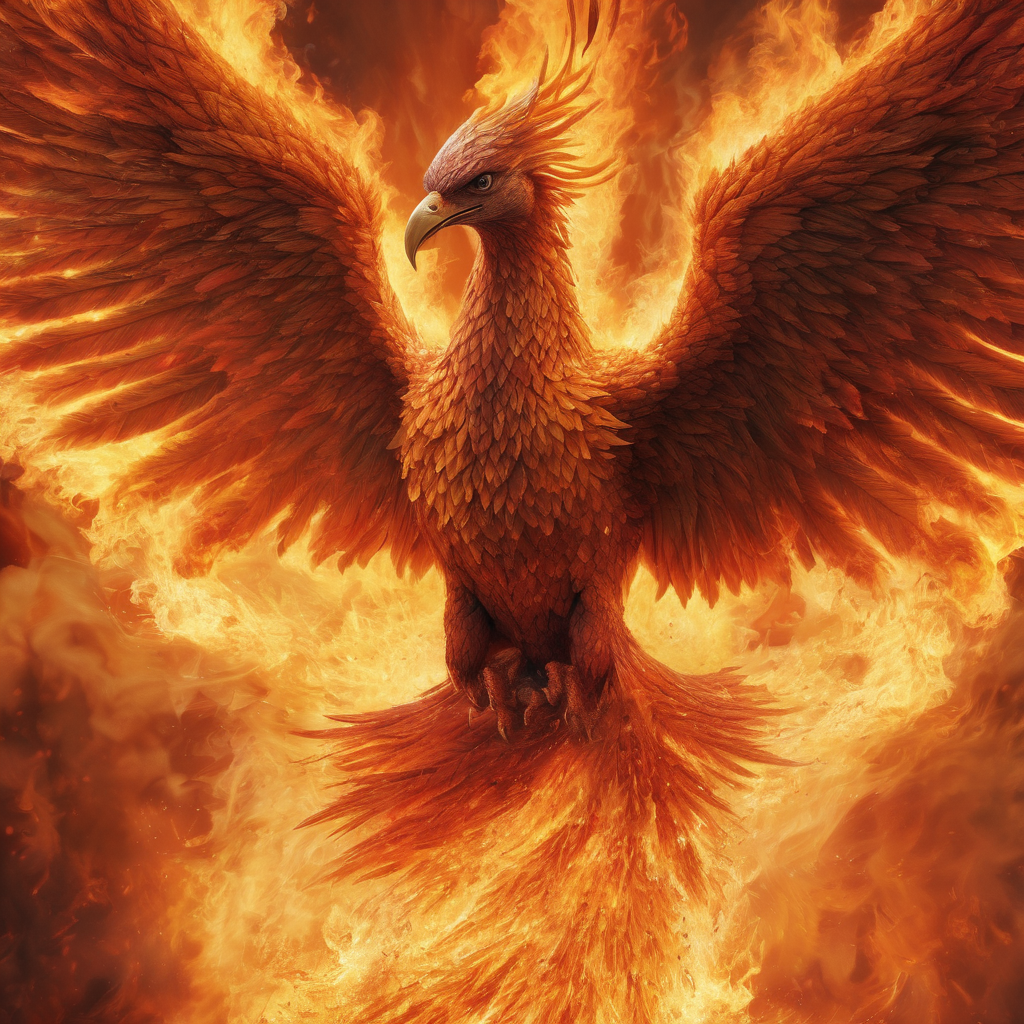
- Renewal and fresh starts
- Rising from failure
- Transformation and innovation
- Strength and resilience
Phoenix Myths Around the World
European Folklore
Medieval European texts describe phoenixes living in Paradise, with their presence indicating divine blessing. Alchemists adopted phoenix symbolism to represent transformation and the philosopher’s stone.
Native American Traditions
Several Native American tribes tell stories of fire birds similar to the phoenix, often connected to thunder, lightning, and renewal ceremonies.
Islamic Literature
Islamic texts mention the Anqa or Simurgh, magnificent birds with phoenix-like qualities that represent divine knowledge and spiritual enlightenment.
Scientific Connections and Real-World Inspirations
While purely mythical, the phoenix may have been inspired by real phenomena:
- Forest fires that enable new growth
- Migratory birds that seem to disappear and return
- Solar eclipses and the sun’s apparent “rebirth”
- Natural cycles of death and renewal in nature
Phoenix Tattoos and Symbolism in Art
Phoenix imagery remains popular in modern art forms:
- Tattoos representing personal transformation
- Paintings depicting rebirth after trauma
- Sculptures symbolizing community renewal
- Digital art exploring themes of resilience
Spiritual and Religious Significance
Many spiritual traditions incorporate phoenix symbolism:
- Christianity uses the phoenix to represent Christ’s resurrection
- Buddhism connects the phoenix to enlightenment and spiritual awakening
- New Age spirituality embraces phoenix energy for personal transformation
- Meditation practices visualize phoenix imagery for renewal
Phoenix vs. Other Mythical Fire Birds
The phoenix differs from other legendary fire creatures:
- Dragon: Typically destructive rather than regenerative
- Thunderbird: Associated with storms rather than rebirth
- Roc: Giant size but lacks the rebirth element
- Firebird: Magical but doesn’t undergo death and resurrection
Lessons from Phoenix Mythology
Phoenix legends teach valuable life lessons:
- Embracing change as natural and necessary
- Finding strength in adversity
- Understanding that endings enable new beginnings
- Recognizing the power of transformation
- Accepting life’s cyclical nature
The phoenix continues to inspire people facing challenges, serving as a powerful metaphor for resilience, hope, and the human capacity for renewal. This timeless mythical creature reminds us that from our lowest moments can come our greatest transformations, making the phoenix one of mythology’s most enduring and meaningful symbols.
Whether viewed through ancient religious texts, classical literature, or modern entertainment, the phoenix remains a compelling representation of the eternal human desire to overcome obstacles and emerge stronger than before.
